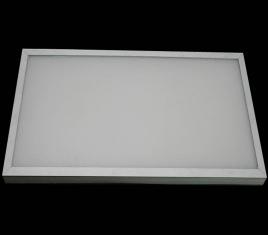 Since the generation of external lighting, we have divided lighting into three eras: filament lamp age (incandescent lamp), gas lamp age (fluorescent lamp), and semiconductor luminous age (LED). Among them, the longest incandescent lamp and the mainstream LED in the future are the most important points of investigation. Regardless of how the times are developed, the production process of the lighting industry is strikingly similar. It is nothing more than China, which is downstream of the industry. The core technologies are basically owned by countries and regions such as Europe, America and Japan.
Since the generation of external lighting, we have divided lighting into three eras: filament lamp age (incandescent lamp), gas lamp age (fluorescent lamp), and semiconductor luminous age (LED). Among them, the longest incandescent lamp and the mainstream LED in the future are the most important points of investigation. Regardless of how the times are developed, the production process of the lighting industry is strikingly similar. It is nothing more than China, which is downstream of the industry. The core technologies are basically owned by countries and regions such as Europe, America and Japan. 1. The principle of LED light emission is that when an electron passes through a layer of semiconductor material, the semiconductor material is excited to convert electrical energy into light energy. However, single-layer semiconductors have a weak light-emitting ability, so many layers of single-layer materials are stacked and pressed into a composite material like a thousand-layer cake. This is called an "epitaxial wafer."
Therefore, the luminous efficiency of LEDs depends on how many layers can be pressed in the same thickness. The thinner the single-layer material, the more layers that can be stacked, the higher the luminous efficiency. At present, the thickness of each layer is usually only 2-20 microns, which also determines the epitaxial wafer production is the most difficult part of the entire LED production process.
2, cutting - LED core: equivalent to pull out the filament from the tungsten material, the difference is that the cut epitaxial wafer is box-shaped.
Due to the special structure of the epitaxial wafer, it is very difficult to cut the light emitting core intact. Not only vacuum but also professional cutting machines are needed. At present, only two manufacturers in the world produce such cutting machines.
3, put the core into the LED chip: the chip is in the LED, just as the lamp holder is in the bulb, it is the power supply part. The "chip" is a very important device for achieving the desired effect of the LED, because the LED requires very high current.
4, encapsulate the LED chip into a luminous body: The LED chip is packaged into a luminous body, just as a filament lamp holder is made by adding a lamp shade into a light bulb. The shape of the lampshade can be different depending on the requirements, but the packaging technology determines the service life of the lamp.
5, lighting applications: just like the use of incandescent bulbs, according to different functions and needs, assembled into different LED products.
For LED lighting, the first three steps of epitaxial wafers, dicing, and chips are upstream, the fourth step is midstream, and the fifth step is downstream. These problems require us to use more energy to break through.
Now it's easy to have a
magical star ceiling in your own home, with our high quality fiber optic star
kit. Unlike most companies offering star ceiling kits, we actually make our own
fiber and components, and our products are certified to exacting CE and ROHS
standards. So you can be sure you're getting the best!
Since we design and manufacture our own fiber optic products, our star ceilings
are higher quality than those offered elsewhere. As well as high quality
components, they come with mixed diameter fibers for a 3D 'near and far'
effect, and also have small fittings to give you a neat finish in the ceiling
or wall where you're installing the star lights.
Our fittings allow the fiber to pass all the way through to the other side of
the material, exposing the fiber end and covering up any ragged edges from
drilling. This allows more light through, giving you a more intense star
effect. The bare fibers can also be used on their own if you prefer.
Fiber Optic Star Effect Light,Star Ceiling Light,Ceiling Star Lights,Fibre Optic Ceiling Lights
ZHONGSHAN G-LIGHTS LIGHTING CO., LTD. , https://www.glightsled.com